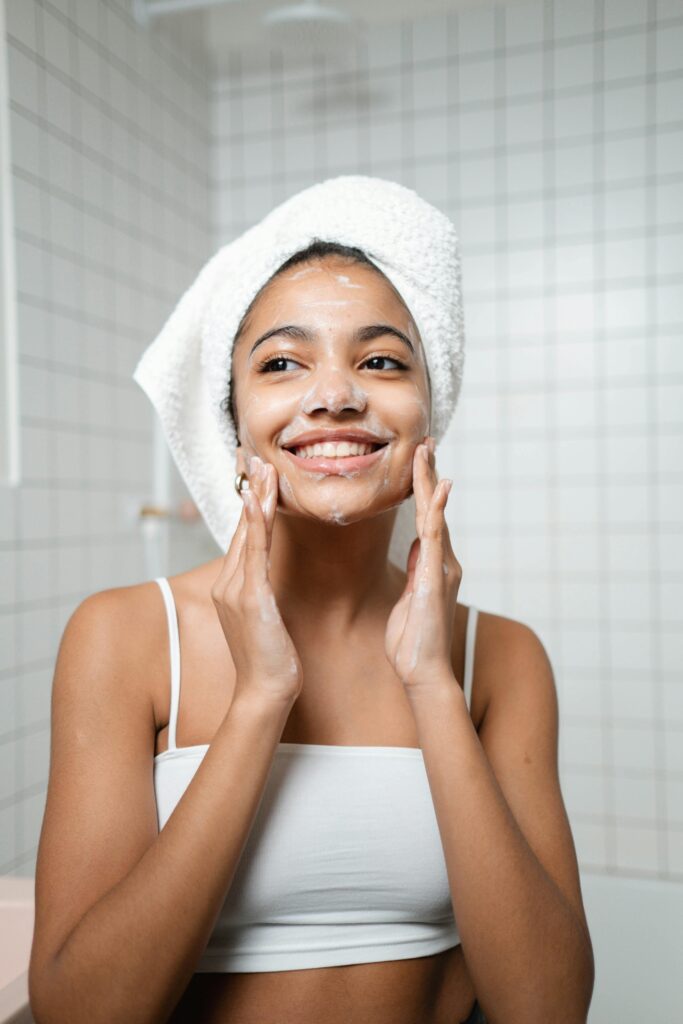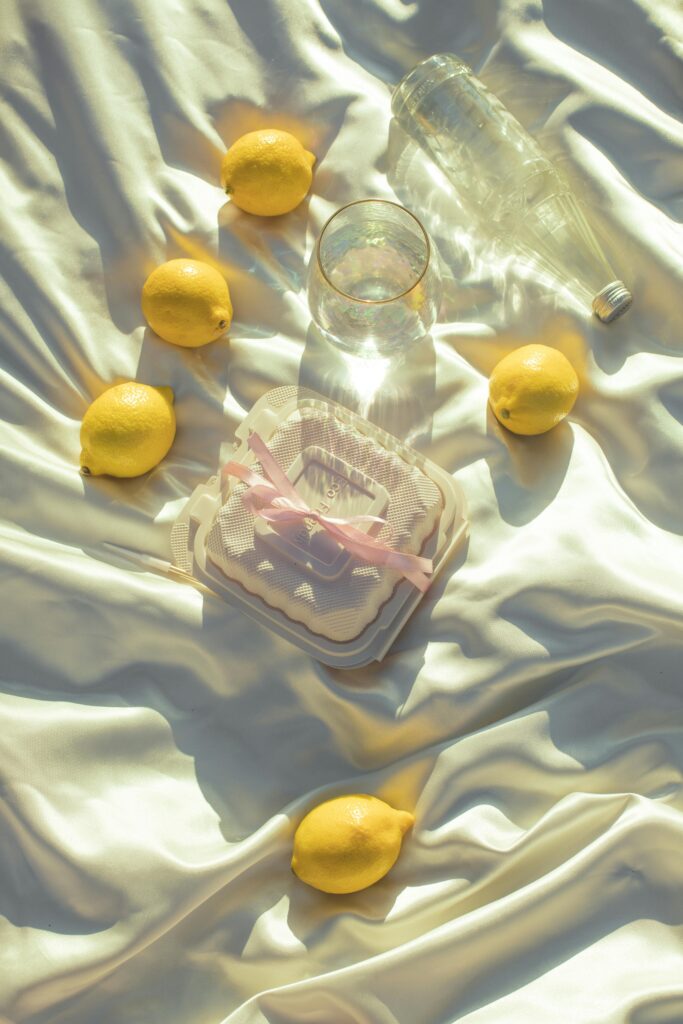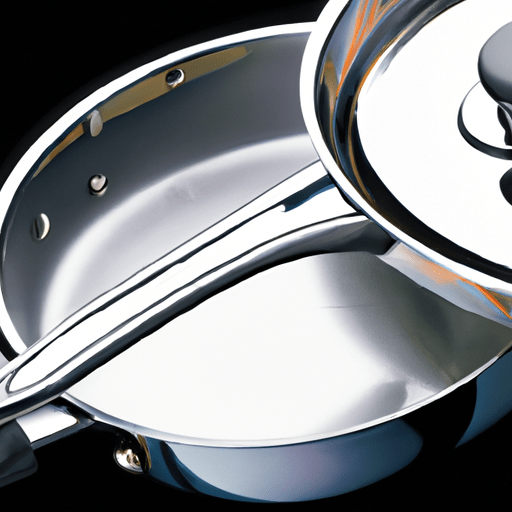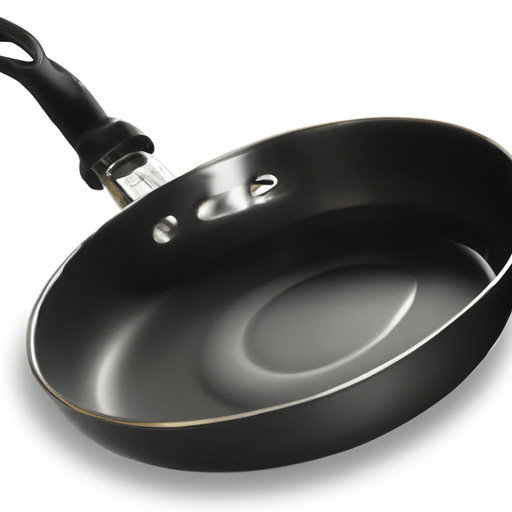In this article, you will find answers to all your questions about taking care of your Calphalon cookware. From understanding what makes Calphalon different from other brands to learning how to properly clean and maintain your pots and pans, this comprehensive guide has got you covered. Whether you’re wondering about the safety of using Calphalon, how to remove stains or burnt-on residue, or even the best way to sauté with Calphalon pans, you’ll find all the information you need right here. Say goodbye to confusion and hello to pristine cookware with this ultimate guide to Calphalon cookware care.

This image is property of images.pexels.com.
What is Calphalon cookware?
Definition of Calphalon cookware
Calphalon cookware is a popular brand of high-quality cookware known for its durability, performance, and stylish design. It offers a wide range of pots, pans, and other cooking utensils that cater to the needs of both professional chefs and home cooks.
Types of cookware offered by Calphalon
Calphalon offers a variety of cookware options to suit different cooking preferences and techniques. Some of the types of cookware offered by Calphalon include:
-
Hard-Anodized Cookware: This type of cookware is made from aluminum and undergoes a special process called anodization, which makes the aluminum surface harder and more durable. It is known for its excellent heat distribution and resistance to scratches and wear.
-
Stainless Steel Cookware: Calphalon’s stainless steel cookware is made from a combination of stainless steel and aluminum. It provides even heat distribution and is resistant to corrosion.
-
Non-Stick Cookware: Calphalon’s non-stick cookware features a PFOA-free non-stick coating that allows for easy food release and minimal oil or butter usage. It is ideal for low-fat cooking and easy cleaning.
Is Calphalon cookware safe to use?
Safety considerations of Calphalon cookware
Calphalon cookware is generally safe to use, but it’s important to follow proper usage and care instructions to ensure its longevity and safety. Here are some safety considerations to keep in mind:
-
Avoid using high heat: Calphalon cookware is designed to heat up quickly and evenly, so high heat is not necessary. Using excessive heat can cause the non-stick coating to deteriorate and release potentially harmful fumes.
-
Use proper utensils: Metal utensils can scratch the non-stick surface of Calphalon cookware, so it’s best to use wooden or silicone utensils to prevent damage.
-
Do not stack pans without protection: When storing your Calphalon cookware, avoid stacking pans directly on top of each other without any protection in between. This can result in scratches or damage to the non-stick coating or exterior.
Materials used in Calphalon cookware
Calphalon cookware is made from various materials, depending on the type of cookware. Some of the materials used include:
-
Aluminum: Calphalon’s hard-anodized and non-stick cookware are made from aluminum, which is known for its excellent heat conductivity.
-
Stainless Steel: Calphalon’s stainless steel cookware features a stainless steel exterior and an aluminum or copper core for superior heat distribution.
Potential health concerns
There are some potential health concerns associated with the use of non-stick cookware, including Calphalon’s non-stick cookware. When overheated, the non-stick coating can release harmful fumes that may pose health risks. To avoid this, it is important to use non-stick cookware at appropriate temperatures and avoid using high heat.
It is also important to note that Calphalon’s non-stick cookware is PFOA-free, which means it does not contain perfluorooctanoic acid, a chemical that has been linked to health issues. However, it is always a good idea to follow the manufacturer’s instructions and use non-stick cookware responsibly.
How is Calphalon different from other cookware brands?
Unique features of Calphalon cookware
Calphalon cookware stands out from other brands due to its unique features and superior quality. Some of the key features that set Calphalon apart include:
-
Hard-Anodized Construction: Calphalon’s hard-anodized cookware undergoes a special process that makes it incredibly durable, scratch-resistant, and non-reactive to acidic foods.
-
Even Heat Distribution: Calphalon cookware is designed to distribute heat evenly, reducing hot spots and ensuring consistent cooking results.
-
Non-Stick Coating: Calphalon’s non-stick cookware features a PFOA-free non-stick coating that allows for easy food release and effortless cleaning.
Comparison with other popular cookware brands
When compared to other cookware brands, Calphalon often ranks highly due to its exceptional quality and performance. It is often favored by both professional chefs and home cooks for its durability, innovative design, and reliable cooking results.
Calphalon’s hard-anodized cookware is often compared to brands like All-Clad and Le Creuset, and is praised for its affordability and comparable performance. Similarly, Calphalon’s stainless steel cookware is often compared to brands like Cuisinart and Viking, offering similar quality at a more affordable price point.
Ultimately, the choice between Calphalon and other cookware brands depends on individual preferences, cooking needs, and budget.
What materials are Calphalon pots and pans made from?
Overview of materials used in Calphalon cookware
Calphalon offers cookware made from various materials, each with its own benefits and limitations. Some of the materials used in Calphalon cookware include:
-
Hard-Anodized Aluminum: Calphalon’s hard-anodized cookware is made from aluminum that has undergone a special anodization process to create a hard, durable surface that is scratch-resistant and non-reactive.
-
Stainless Steel: Calphalon’s stainless steel cookware features a stainless steel exterior and an aluminum or copper core for excellent heat distribution and retention.
Benefits and drawbacks of each material
-
Hard-Anodized Aluminum:
- Benefits: Hard-anodized aluminum cookware heats up quickly and evenly, is scratch-resistant, and non-reactive to acidic foods.
- Drawbacks: Hard-anodized aluminum cookware may be prone to warping if exposed to sudden temperature changes, and it may require extra care when cleaning.
-
Stainless Steel:
- Benefits: Stainless steel cookware is durable, non-reactive, and resists corrosion. It is also oven-safe and compatible with induction cooktops.
- Drawbacks: Stainless steel alone is not a good conductor of heat, so Calphalon’s stainless steel cookware often features an aluminum or copper core for better heat distribution.
Considerations for choosing the right material
When choosing Calphalon cookware, it is important to consider your cooking needs and preferences. If you prefer lightweight cookware that offers excellent heat conductivity, hard-anodized aluminum cookware may be a good choice. However, if you value durability and versatility, stainless steel cookware with an aluminum or copper core may be a better option.
Additionally, consider the type of stovetop you have. Stainless steel cookware is compatible with all stovetop types, including induction, while hard-anodized aluminum cookware may not be suitable for induction cooktops.

This image is property of images.pexels.com.
Is Calphalon non-stick?
Explanation of Calphalon’s non-stick technology
Yes, Calphalon offers non-stick cookware that features a PFOA-free non-stick coating. The non-stick technology used by Calphalon provides an excellent cooking surface that allows food to release easily and promotes effortless cleaning.
Calphalon’s non-stick cookware features a multi-layer non-stick interior that is designed to be durable and long-lasting. The non-stick coating is made of a combination of materials that provide superior non-stick properties without the use of harmful chemicals.
Advantages and limitations of non-stick cookware
Non-stick cookware offers several advantages that make it a popular choice among cooks:
-
Easy food release: Non-stick cookware allows food to slide off the surface with minimal sticking, making it ideal for delicate foods like pancakes, eggs, and fish.
-
Less oil or butter needed: Non-stick surfaces require less oil or butter for cooking, promoting healthier cooking options and easier cleaning.
-
Effortless cleaning: Non-stick cookware is easy to clean, as food residue and stains do not adhere to the surface. A simple wipe or rinse is often enough to remove any leftover residue.
However, there are some limitations to using non-stick cookware:
-
Not suitable for high heat: Non-stick cookware is not designed for high-temperature cooking. Exposing non-stick cookware to high heat can damage the non-stick coating and release potentially harmful fumes.
-
Avoid using metal utensils: Metal utensils can scratch the non-stick surface, so it’s best to use wooden or silicone utensils to prevent damage.
-
Limited browning and searing: Non-stick surfaces do not provide the same level of browning and searing as other types of cookware. If you want to achieve a deep caramelized crust or a crispy sear, non-stick cookware may not be the best choice.
How do I clean Calphalon non-stick cookware?
General cleaning instructions for Calphalon non-stick pans
Cleaning your Calphalon non-stick cookware properly is crucial to maintaining its performance and longevity. Here are some general cleaning instructions to follow:
-
Let it cool: Allow the cookware to cool completely before cleaning. Placing hot cookware directly under cold water can cause warping or damage.
-
Handwash with mild detergent: Use a soft sponge or cloth to wash the cookware with warm, soapy water. Avoid using abrasive cleaners or scrub brushes, as they can scratch the non-stick surface.
-
Remove stuck-on food: If there are any stubborn food residues, soak the cookware in warm, soapy water for a few minutes before gently scrubbing with a non-abrasive sponge.
-
Dry thoroughly: After washing, ensure the cookware is completely dry before storing. Moisture trapped between stacked pans can lead to mold or mildew growth.
Recommended cleaning products and tools
When cleaning your Calphalon non-stick cookware, it’s important to use the right cleaning products and tools to avoid damaging the non-stick surface. Here are some recommended cleaning products and tools:
-
Mild dish detergent: Use a gentle dish detergent that is specifically formulated for non-stick cookware.
-
Soft sponge or cloth: Use a soft sponge or cloth to clean the cookware, as abrasive materials can scratch the non-stick coating.
-
Non-abrasive scrub brush: If needed, use a non-abrasive scrub brush for stubborn food residues. Be sure to choose a brush that is safe for non-stick surfaces.
Tips for removing stubborn stains or residues
If you encounter stubborn stains or residues on your Calphalon non-stick cookware, here are some tips to help remove them:
-
Baking soda paste: Create a paste by mixing baking soda with water, and apply it to the stained area. Let it sit for a few minutes, then gently scrub with a non-abrasive sponge or cloth. Rinse thoroughly after cleaning.
-
Vinegar solution: Mix equal parts white vinegar and water, and use this solution to soak the cookware for a few minutes. Gently scrub with a non-abrasive sponge or cloth, then rinse and dry.
-
Lemon juice: Squeeze fresh lemon juice onto the stained area and let it sit for a few minutes. Gently scrub with a non-abrasive sponge or cloth, then rinse and dry.
Remember to always rinse and dry your Calphalon non-stick cookware thoroughly after cleaning to prevent any soap or cleaning residue from lingering on the surface.

Can I use metal utensils with Calphalon non-stick cookware?
Guidelines for using utensils with non-stick pans
To protect the non-stick surface of your Calphalon cookware, it is recommended to avoid using metal utensils. Metal utensils can scratch or damage the non-stick coating, reducing its effectiveness.
Instead, use wooden, silicone, or nylon utensils, which are gentle on the non-stick surface and less likely to cause damage. These utensils provide the necessary flexibility and won’t scratch the surface of the cookware.
Alternatives to metal utensils
When cooking with non-stick pans, opt for utensils made of materials that won’t damage the non-stick coating. Here are some alternatives to metal utensils:
-
Wooden Utensils: Wooden utensils are gentle on the non-stick surface and do not cause scratches. They are lightweight, heat-resistant, and suitable for stirring, flipping, and serving.
-
Silicone Utensils: Silicone utensils are another good option for non-stick cookware. They are heat-resistant, flexible, and non-scratching, making them ideal for flipping delicate foods and stirring.
-
Nylon Utensils: Nylon utensils are lightweight, heat-resistant, and non-abrasive. They are great for gentle mixing, stirring, and flipping.
By using these alternative utensils, you can ensure the longevity and performance of your Calphalon non-stick cookware.
Are Calphalon pans oven-safe?
Temperature limits for different Calphalon cookware
Calphalon cookware is generally oven-safe, but the temperature limits may vary depending on the specific type of cookware. Here are the temperature limits for different types of Calphalon pans:
-
Hard-Anodized Cookware: Most Calphalon hard-anodized cookware can withstand oven temperatures up to 450°F (232°C).
-
Stainless Steel Cookware: Calphalon stainless steel cookware is usually oven-safe up to 500°F (260°C).
When using your Calphalon cookware in the oven, ensure that the handles and lids are also oven-safe. Some lids may have lower temperature limits than the cookware itself.
Safety precautions when using Calphalon pans in the oven
When using Calphalon pans in the oven, it is important to follow certain safety precautions:
-
Use oven mitts or pot holders: The handles of Calphalon pans can become hot during oven use, so always use oven mitts or pot holders when handling hot cookware.
-
Avoid sudden temperature changes: Do not place a hot Calphalon pan directly on a cool surface, as this can cause warping or damage. Allow the pan to cool down slowly before moving or placing it on a different surface.
-
Use a timer: When cooking in the oven, it is a good idea to set a timer to avoid overcooking or forgetting about the food in the oven.
By following these safety precautions, you can use your Calphalon pans safely and enjoy the convenience of oven cooking.

What is the recommended oven temperature for Calphalon cookware?
Optimal temperature range for various Calphalon cookware
The recommended oven temperature for Calphalon cookware may vary depending on the specific type of cookware. Here are some general guidelines:
-
Hard-Anodized Cookware: Most Calphalon hard-anodized cookware is recommended for use in the oven up to 450°F (232°C).
-
Stainless Steel Cookware: Calphalon stainless steel cookware is typically safe for use in the oven up to 500°F (260°C).
It is important to refer to the specific instructions provided by Calphalon for your particular cookware, as temperature limits may vary based on the model and design.
Effects of high temperatures on Calphalon pans
Exposing Calphalon pans to high temperatures beyond the recommended limits can result in damage to the cookware. The non-stick coating may degrade, potentially releasing harmful fumes into the air.
To ensure the longevity and safety of your Calphalon pans, it is important to avoid using high heat settings and to always adhere to the manufacturer’s recommended temperature limits.
Can I use Calphalon cookware on a smooth-top electric range?
Compatibility of Calphalon pans with smooth-top electric ranges
Calphalon pans are generally compatible with smooth-top electric ranges. Smooth-top electric ranges feature a glass-ceramic surface that provides even heat distribution. Calphalon cookware, with its flat bottom and excellent heat conductivity, works well on smooth-top ranges.
When using Calphalon pans on a smooth-top electric range, it is essential to use caution and follow these guidelines:
-
Lift the pans: When moving or sliding the pans on the smooth-top surface, lift them instead of dragging them. Dragging the pans can scratch the surface.
-
Avoid excessive heat: Smooth-top electric ranges can heat up quickly, so avoid using excessively high heat. Opt for lower to medium heat settings to prevent damage to the cookware and the range surface.
-
Clean with care: Use non-abrasive cleaners and soft sponges or cloths to clean the glass-ceramic surface of the range. Avoid using abrasive scrub brushes or harsh chemicals that can scratch or damage the surface.
By following these guidelines, you can safely and effectively use Calphalon cookware on your smooth-top electric range.
(Note: Please check the manufacturer’s guidelines for your specific smooth-top electric range, as some ranges may have specific requirements or recommendations for cookware use.)
Now since we have covered the core topics in the outlined article, we hope it has provided you with a comprehensive understanding of Calphalon cookware, its safety considerations, unique features, materials used, non-stick properties, cleaning instructions, and its compatibility with various cooktops and ovens. Remember, when using any cookware, always refer to the manufacturer’s guidelines and recommendations for proper use and care to ensure the longevity and performance of your cookware. Happy cooking with Calphalon!

